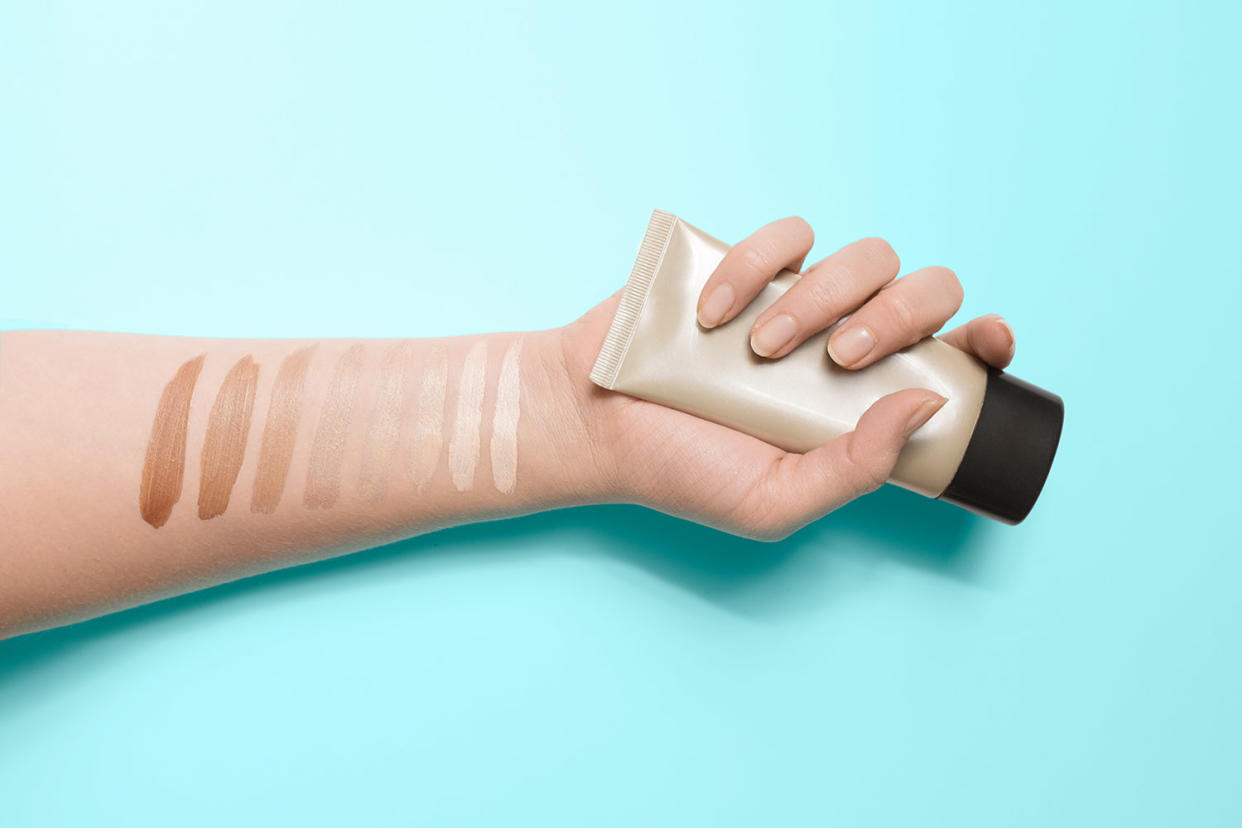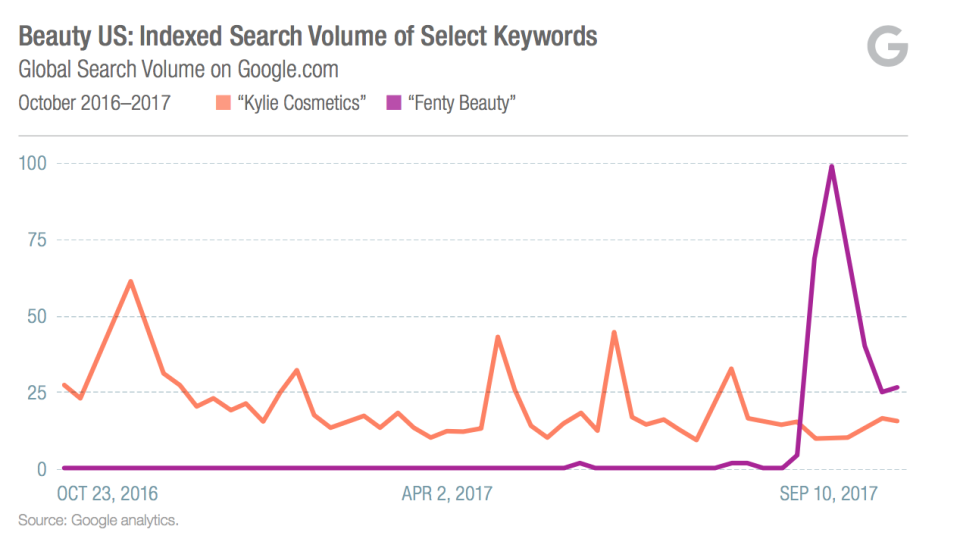Would you ever buy a foundation without swatching first? Here’s why you might

There’s something mesmerizing about watching “swatching videos” — where people apply makeup products side by side on their arms.
But beauty brands are now working harder than ever to persuade you that you can buy new foundation and concealer online without swatching in a store first.
A new report, released by the research firm L2 Insights, finds that “63 percent of U.S. beauty shoppers use their phones as research companions when shopping in store, and over half of these consumers are interested in investigating shade options and skin type or tone compatibility.” To beauty brands, that means there’s an incentive to invest more heavily in tools that will help shoppers search — and purchase — online.

Specifically, retailers are focused on products beyond foundation — concealer, highlighter, and contour products — sales of which have nearly doubled in the past year.
Katie Smith, senior research analyst at the market research firm Edited, analyzed a sample of U.S. online retailers stocking 736 makeup brands. According to her findings, the number of full- price sellouts online (that is, instances when 100 percent of stocked inventory is sold) rose to 12.3 percent in the first half of 2017, compared to 7.3 percent in the first half of 2016.
While people are shopping for foundation and complexion products more frequently online, that doesn’t mean all shoppers are satisfied with their beauty brands’ e-commerce endeavors.
“I have personally never purchased foundation online,” says Kelsey Daenzer, a 19-year-old from San Jose, Calif., who says she frequently shops at Ulta Beauty. “I’m superpicky about my foundation, so I never buy it without swatching it first. It’s much easier matching the color and undertones to your skin.”
Other shoppers who do purchase complexion products online, like Katherine Ruiz, do a bit of cross-platform research before deciding which shades are right for them. The 26-year-old from New Jersey says she purchased Smashbox’s Photo Finish foundation on Sephora’s website after comparing the photos on the site and digital photos of people wearing the foundation.
But Ruiz’s research doesn’t stop there: she also carefully scans product reviews. “Some people write their shades in other foundations, and that also helps. I’m an NC42 in MAC and I’m a 3.2 in Smashbox. Stuff like that helps a lot.”

That’s quite a bit of extra work to take on in order to be able to purchase from the comfort of your own home, considering that you could just test the colors on your skin in a store. And that doesn’t even account for how difficult it is for women of color — especially outside major metropolitan areas — to find the right shade. Drugstores don’t carry a wide enough selection of shades for people who aren’t white.
That’s why Rihanna’s Fenty Beauty line has achieved such a monumental task, selling an entire product line from launch with a full array of both dark and light shades and an authenticity that drugstore brands and department store beauty brands alike can only dream of.
Still, not everyone has access to a Sephora store to swatch the Fenty Beauty line for themselves. Luckily, some beauty brands are working to make their virtual shopping experience more lifelike.
In an effort to show people how a product might look on them, BareMinerals, Charlotte Tilbury, Too Faced, and Nars, among others, offer what L2 calls “on-model images” on their websites, meaning that shoppers can select a shade and then look at an image of a model wearing the product.
The websites of Benefit, e.l.f., and NYX include “guided selling tools,” with quizzes and questionnaires for shoppers to identify which products fit their needs.
Now more than ever, brands like Bobbi Brown offer shoppers at-home samples to “inspire confidence in shoppers to purchase new complexion products online, mirroring the ability to test shade ranges in store,” according to L2’s report.
Perhaps the most inefficient way brands are attempting to digitize the in-store experience is by way of chatbots (think of a virtual consultant, built to help you navigate your way to the right product).
The biggest cosmetics companies — like Clinique, according to L2’s report — have some work to do before their chatbot technology truly mimics the in-store experience with a sales representative. Some chatbots, like Hello Ava, for example, which is focused on skin care, not makeup, are already proving useful.
For as much as cosmetics giants are tailoring their experiences to their youngest, mobile-first shoppers, some will always just prefer to head for a store.
“I think I’ll always prefer swatching in person, because I like to see the quality of the foundation,” Daenzer says. Until Sephora can create a “tattoo coverage” simulation online, Daenzer adds, she’ll stick to the store.
Read more from Yahoo Style + Beauty:
Angelina Jolie, One of Hollywood’s Highest Paid Stars, Wore an Affordable Everlane Outfit
Tiffany Trump Quotes Muhammad Ali in Stylish Memorial Day Photo
Teen Faced her ‘Biggest Fear’ and Wore a Swimsuit to the Beach
Follow us on Instagram, Facebook, and Pinterest for nonstop inspiration delivered fresh to your feed, every day. For Twitter updates, follow @YahooStyle and @YahooBeauty.
Alexandra Mondalek is a writer for Yahoo Style + Beauty. Follow her on Twitter @amondalek.
